Hair Loss Prevention - Best Remedies to Stop Hair Fall
Seeing those hair strands on your pillow or near your bathroom plughole can instantly turn your happy mood into sorrow. No doubt, shedding hair is part of the natural cycle, and it’s completely fine to lose 50-100 strands each day. But what if the process exacerbates to a degree where you suddenly start losing too much hair?
In such cases, take a closer look at your condition to discover the underlying cause as excessive shedding can point to a hair disorder. Keep scrolling to have a gist of the possible causes of shedding and how to stop hair fall to an extent where it doesn’t bother you.
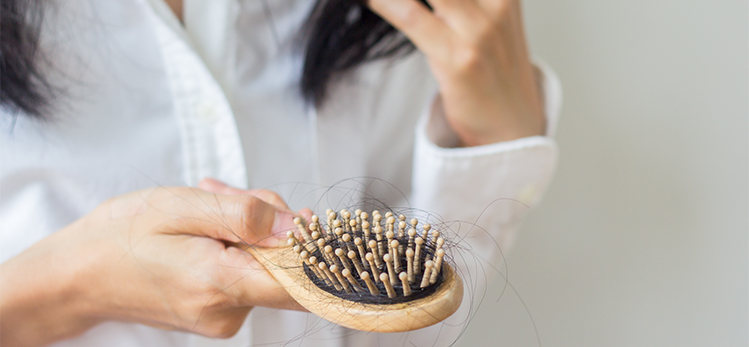
The major causes of hair fall include:
Pregnancy and childbirth
Poor Diet
Menopause
Medical Conditions like thyroid and alopecia
Certain medications
Discontinuing birth control pills
Stress
Emotional or physical distress
Bad hair hygiene
Hairstyling tools and chemicals treatments
Genetics
Certain weather conditions like monsoon
6 Natural Ways to Stop Hair Fall
Luckily, you can take the natural route to stop hair fall. Some of the ways include:
1. Onion Juice
The notion is that the high sulfur content in onion juice can combat hair loss. A similar idea is supported by a scientific study that found that untreated onion juice leads to hair regrowth. So, if you are struggling with hair loss, resort to onion juice to counteract the issue and promote healthy hair.
2. Iron and Biotin
Low levels of iron are associated with hair fall. That means you need to eat iron-rich foods every day to prevent iron deficiency and the subsequent hair fall. Besides this, you can count on foods enriched with biotin (vitamin B7) as it is known to remedy hair loss. Ingest these nutrients by consuming meat, leafy greens, eggs, fish, and mushrooms. You can also consider iron and biotin supplements to meet your daily nutrient requirements.
3. Protein and Amino Acids

Protein malnutrition can result in hair loss and hair thinning. On the bright side, a sufficient intake of proteins and amino acids helps fight hair fall and keeps hair in its healthiest state. So, add these nutrients to your diet through sources like meat, fish, cheese, nuts, and seeds to eliminate your hair fall problem.
4. Aromapathy
Scalp massages done with essential oils are great for hair fall as well as hair growth. For instance- rosemary oil and chamomile oil prevent hair loss and improve hair growth at the same time.
5. Right Hair Care
Many times hair loss can be stopped by taking care of your hair wisely. Instead of using chemical-laden shampoos and conditioners, use natural hair care products. Be gentle while brushing and drying your hair. Limit chemical treatments and the use of hair styling tools that require heat. Also, steer clear of hairstyles that put a strain on your scalp or hair strands.
6. Lifestyle Changes
If you want to know how to stop hair fall for the long term, start making certain lifestyle changes.
Use toxin-free hair care products every time
Follow smart hair care
De-stress and sleep well every night
Eat a hair-friendly diet and limit alcohol intake
Get your hair trimmed regularly
Dermatology Treatments for Hair Loss That Work
With help from a dermatologist, you can reverse hair loss. This is possible through the following dermatology-grade solutions.
Medication
If you suffer from excessive shedding due to an underlying condition or disease, your doctor will treat the disease to stop your hair fall. In such cases, medications like Minoxidil for androgenetic alopecia, and Finasteride are generally prescribed by your dermatologist. It is important to note that these treatments should be followed only as per the instructions of your dermatologist.
Hair Transplant Surgery
If only your crown is affected, you can resort to hair transplant surgery. Also known as hair restoration surgery, this cosmetic procedure involves removing the hair strands from a portion of the head and transplanting them to the bald spot.
Laser Hair Therapy
An FDA-approved low-level laser device can help combat hereditary hair loss in both males and females. This therapy works by acting upon your hair follicles on the cellular level and slows down hair loss while orchestrating regrowth.
Do’s and Don'ts for Hair Loss
Stick to these dos and don’ts if you are struggling with hair loss:
The Do’s
Brush your hair properly. Let the hair strands dry naturally before starting to brush them from the ends.
Follow a nutrient-rich diet comprising the right amounts of protein, iron, zinc, biotin, and other vitamins and minerals.
Use a gentle or chemical-free shampoo and conditioner.
The Don'ts
Don’t use chemical and heat-based treatments for your hair.
Don’t use hair care products with artificial scents.
Don't wash your hair more than twice a week.
Conclusion
Excessive hair fall can be stressful and embarrassing at the same time. If you wonder how to stop hair fall, you can follow these natural ways to combat the problem. If the natural approach fails to give significant results, it’s best to seek help from a dermatologist.
Myth Busters HairFall
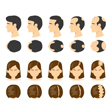
Androgenetic Alopecia - Everything You Need To Know
Have you been experiencing excessive hair fall over a prolonged period of time? It could be an early sign of androgenetic alopecia. It is a hair loss disorder common in both genders and can lead to progressive thinning and even baldness in some patients if not caught and treated early.
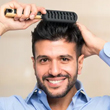
How To Make Hair Grow Faster For Men
A head full of healthy hair is a matter of confidence. Hair has its own mechanism of growing and shedding, and it is when this mechanism is thrown off that growth is hindered. Especially in the case of males, hair growth faces a lot of hiccups that can easily be managed.
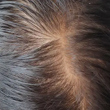
Female Pattern Baldness - Causes & Treatments
Have you suddenly noticed an increase in the number of hair strands on your pillow in the morning? Or is your ponytail getting thinner by day? Well, you might be suffering from female pattern baldness. While that does sound scary, identifying it early on is key to treating this condition effectively. So keep reading to know what this is, how you can identify it, and most importantly, what treatments you can avail of to get your beautiful lustrous hair back.
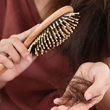
What Are The Reasons For Hairfall?
Almost everyone experiences some amount of hair thinning over the years. Shedding around 50 to 100 single strands of hair per day is considered normal. However, losing more than 150 strands a day, experiencing sudden thinning, or developing circular bald patches on your scalp are reasons for concern. Hair loss occurs when new hair doesn’t grow fast enough to replace the amount of hair you lose daily. Hair can fall due to various reasons, with hereditary hair loss and poor nutrition being the most common hair fall reasons.

Expert Approved Tips For Hair Growth
What can be more debilitating than seeing hundreds of hair strands shedding from your scalp every time you brush your hair? Also, excessive molting occurs during seasonal changes that can be very stressful for you. Although it’s okay to lose between 50-100 strands every day, according to the American Academy of Dermatology, the problem occurs when you start shedding more than normal. But that doesn’t mean you have to feel helpless as there are ways to grow your hair back. Even if you are coping with baldness or alopecia, certain hair growth tips from dermatologists can come to your rescue. Read on to discover how these tips can be your savior when abnormal hair fall problems are in sight.
Trending Videos
+ 8 Sources
LMRC - GGI-CO-A2-DMA-300026127-300026127-WM-J21-282
© 2021 Dr. Reddy’s Laboratories Ltd. All rights reserved.